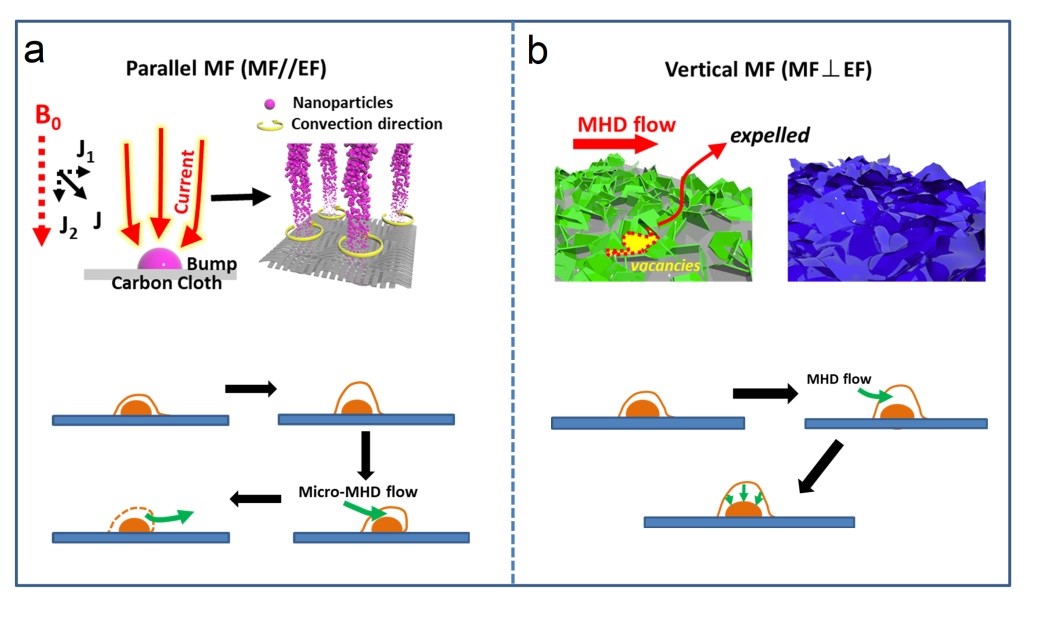
A newly published paper on Small Methods provided a novel idea to improve the electrochemical performance of layered materials.
The research team, led by Prof. ZHU Xuebin from Hefei Institutes of Physical Science (HFIPS), Chinese Academy of Sciences (CAS), prepared Layered Double Hydroxides (LDHs) with abundant active sites and promising loading mass on carbon cloth (CC), for the first time, via magneto-electrodeposition(MED)technique.
Aside from that, scientists constructed a flexible hybrid supercapacitor (HSC), which displayed high energy density with an outstanding cycling stability. To prove the performance, electronic watch and LED lights were successfully driven in this experiment.
LDHs prepared on CC are regarded as ideal cathodes for hybrid supercapacitors for portable electronics. electrodeposition as a facile, time-saving and cost-effective technique is suitable for scalable production. The insufficient loading mass and random restacking issue, however, greatly induces the unsatisfying areal capacity.
In this research, scientists developed the magneto-electrodeposition facility and prepared NiCo-LDH on carbon cloth via MED technique. The magnetohydrodynaic (MHD) effect, which was induced by the electric-magnetic field coupling, greatly increased the loading mass as well as constructed a 3D cross-linked network pattern, resulting in an outstanding areal capacity of 2.73 C cm-2
"This novel technique, tuning microstructures of NiCo-LDH, could greatly accelerate the mass transport during the electrodeposition process," explained LI Hui, who conducted the research, "and compared to conventional methods, electrodeposition is time-saving, economical and facile, which is suitable for scalable production."
This study provided a new route to prepare high-performance LDHs supercapacitor electrodes.

Figure 1 Schematic illustration of the preparation of NiCo-LDH on carbon cloth (CC). (Image by LI Hui)

Figure 2 (a) Micro-MHD effect (upper) and nucleation process under parallel MF (bottom). (b) MHD effect (upper) and nucleation process under vertical MF (bottom). (Image by LI Hui)

Figure 3 (a) Electrochemical performances of samples prepared under magnetic fields. (b) LED lights were successfully driven by as-assembled devices. (Image by LI Hui)